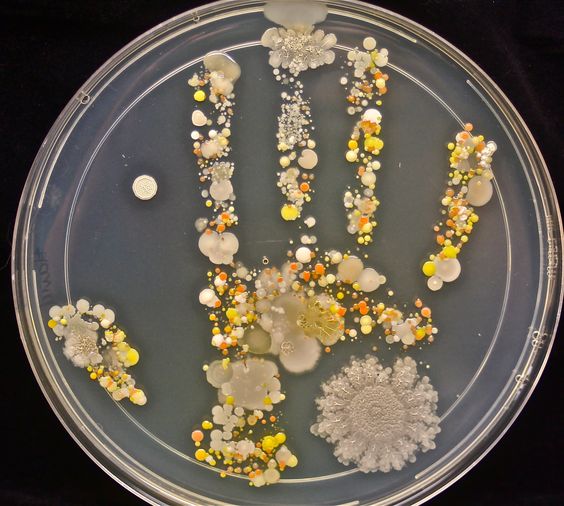
In the public’s view microbiology is an abstract science that is not easily seen nor understood.
To help visualize the science, many microbiology instructors do a basic experiment on the first day of class – environmental swabs. Using what is essentially a fancy Q-tip®, students swab cell phones, backpacks, table tops, and water bottles. Anything people can touch is fair game, the list of potential surfaces goes on and on. The swabs are then smeared on a glass plate and left to “grow.”
When students return several days later to view the weird shapes that sprouted on their plates they respond with emphatic utterances ranging from “GROSS!” to “COOL!”
This simple swab experiment is designed to show students that bacteria are everywhere, with the plates helping visual this point.
As a laboratory technician at a community college, I have set-up demonstration plates for college students for years. I typically enlist my kids’ help by doing simple, yet fun, bacterial hand print plates that I show the microbiology students when they arrive to class a few days later.
My most vivid and memorable experiment occurred two years ago. The routine went as normal. I hurriedly pressed my 8-year-old son’s hand onto a large agar plate as we walked out the door for school. At the time no one in my household thought much about it. This was pretty normal for my kinds.
After a week of various temperature incubations, the results eventually yielded a visually stunning bacterial handprint. Since photography was one of my hobbies, I snapped a picture. On a whim I posted the image on MicrobeWorld (a website run by American Society for Microbiology) on a Friday morning.
By the following Monday the image had gone viral…and yes, many a joke has been made about a bacterial handprint going viral!
Bacterial handprints had been posted before, but the artistic and vivid nature of this one image took the internet by storm. The image sparked hundreds of articles across the world highlighting the need for hand washing, as well as articles discussing the normal symbiotic relationship between humans and bacteria.
There was a simple lesson I learned from this experience. Whether in photography, film, or science communication – show, don’t tell. As the old saying goes…”a picture is worth a thousand words.”
Tasha Sturm
Science Laboratory Technician
Cabrillo College



Leave a Reply